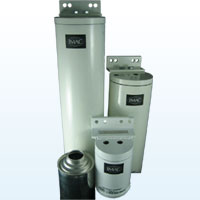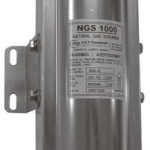Valve Actuator Maintenance Programs Needed for EPA Compliance
The EPA has updated rules, forcing energy producers to place more emphasis on proactive maintenance programs. Included below are valve actuator maintenance tips on stem seals and using filter dryers to keep your pipeline in compliance.
Background – Mandatory Greenhouse Gas Reporting Rule
 Due to the concerns over greenhouse gas emissions, in 2011, the EPA enacted Subpart W of the Code of Federal Regulations (CFR) 40, Part 98, as the Mandatory Greenhouse Gas Reporting Rule. This ruling requires reporting methane and other volatile organic compounds (VOC) emissions at onshore natural gas assets (including pipelines).
Due to the concerns over greenhouse gas emissions, in 2011, the EPA enacted Subpart W of the Code of Federal Regulations (CFR) 40, Part 98, as the Mandatory Greenhouse Gas Reporting Rule. This ruling requires reporting methane and other volatile organic compounds (VOC) emissions at onshore natural gas assets (including pipelines).
Compliance Updates
Initially, Subpart W dealt with pipe sections from the wellhead through distribution service positions; however, as of January 1, 2017, Subpart W was expanded to include gathering lines and booster stations.
Additionally, CFR 40, Part 60, Subpart 0000, (a/k/a Quad 0) was executed on onshore gas facilities constructed or modified since 2011. This subpart affects equipment’s operation in hydraulically fractured gas well completions, pneumatic controllers, reciprocating and centrifugal compressors, storage vessels, and leak-detection equipment.
Of course, as the Trump administration gets ready to tackle the EPA to dismantle Obama’s climate policies, all this may change.
Control Elements: Valve Actuators and Line Break Detection Systems
There are three control elements used in an emergency shutdown of pipelines: valves, valve actuators, and line break detection systems. Because of the new regulations, it has become necessary that pipeline operators examine and adopt proactive maintenance and repair procedures. These protocols ensure that the control elements are performing well yet avoid false alarms that lead to expensive site visits and escalating repair costs, especially given that many of these emergency shutdown controls are in remote locations.
Because all control elements are susceptible to failure, energy producers must adopt proactive maintenance programs.
Actuator Maintenance Recommendations
Seals
Actuators provide automated power for operating the valve. While valve actuators driven by electro-hydraulics are considered more environmentally responsible, pneumatic and hydraulic actuators are still common. In these cases, the direct pipeline gas powers the actuator.
One of the more common problems that require monitoring is leaking gas at the stem seal, demanding stem packing. When there is an actuator’s infrequent operation, corrosion and seal degradation may occur from temperature fluctuations, humidity, variabilities, and precipitation. Whereas actively used actuators may have seal and seat wear from harsh conditions or sideloading from misalignment. Additionally, high pipeline pressure can accelerate the need for maintenance. For these reasons, regular maintenance of the valve actuator seals is recommended.
Filter Dryers
 In addition to regular servicing and repairing the seals, the use of filter dryers to filter and condition the supply gas, especially in high-pressure systems, is recommended to prevent the damage of downstream equipment from debris, moisture (freeze-ups & hydrate formation), and other contaminants. This application is typical for IMAC Filter Dryers, and the manufacturer suggests that the filter elements be replaced once to twice each year.
In addition to regular servicing and repairing the seals, the use of filter dryers to filter and condition the supply gas, especially in high-pressure systems, is recommended to prevent the damage of downstream equipment from debris, moisture (freeze-ups & hydrate formation), and other contaminants. This application is typical for IMAC Filter Dryers, and the manufacturer suggests that the filter elements be replaced once to twice each year.
The IMAC Systems filter elements can also be used in Welker Filter Dryers and easily adapted for Becker Filter Dryers. If you would like more information on the IMAC Filter Dryer, visit the Filtration Page or ask for a quote.




